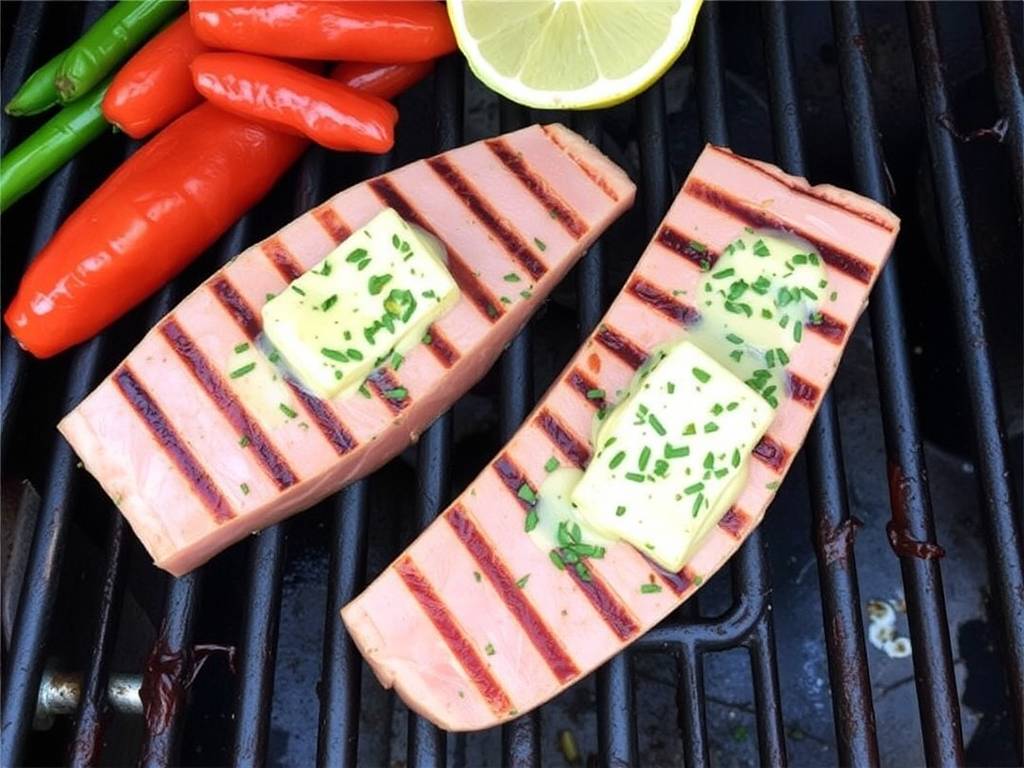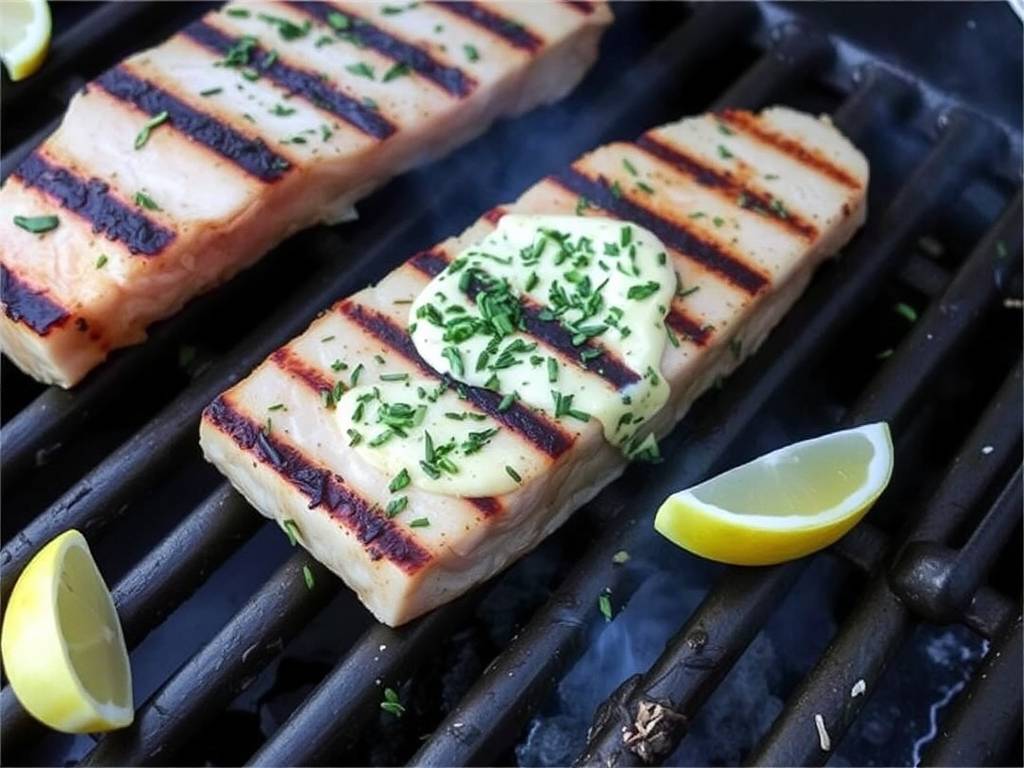The Ultimate Guide to Grilling Perfect Tuna Steaks with Herb and Garlic Butter
There’s something uniquely satisfying about grilling tuna steaks. When done right, the exterior gets a beautiful, smoky sear, while the inside remains tender, moist, and almost steak-like in its richness. But achieving that perfection can feel daunting. Many home cooks struggle with tuna sticking to the grates, overcooking it into a dry, chalky disappointment, or failing to infuse it with enough flavor. Today, we’re going to change that. We're diving deep into the art and science of how to grill tuna steaks, focusing on a game-changing accompaniment: a homemade herb and garlic butter. This isn't just a recipe; it's a complete guide to mastering grilled tuna from start to finish.

Let's start with the star of the show: the tuna itself. Not all tuna is created equal for the grill. You'll want thick-cut steaks, ideally 1 to 1.5 inches thick. Look for labels like "sashimi-grade" or "sushi-grade." This designation means the fish has been handled to a higher standard, making it safer to enjoy when cooked rare or medium-rare, which is the ideal way to experience grilled tuna. The best species for grilling are Ahi (Yellowfin) or Bigeye Tuna, known for their firm texture and rich flavor that stands up beautifully to the high heat of the grill. If you can only find frozen steaks, that's okay! Thaw them slowly in the refrigerator overnight. Never thaw tuna at room temperature, as this can compromise texture and safety.

Now, for the flavor powerhouse: our homemade herb and garlic compound butter. This simple condiment is the secret to elevating your grilled tuna from great to extraordinary. It bastes the fish as it cooks, creating a flavorful crust, and then melts luxuriously over the top when served. To make it, you'll need one stick (1/2 cup) of unsalted butter, softened at room temperature. In a bowl, combine the butter with three finely minced garlic cloves, one tablespoon of freshly chopped parsley, one teaspoon of freshly chopped dill, half a teaspoon of chopped chives, a squeeze of fresh lemon juice, and a quarter teaspoon of both salt and black pepper. Mix everything thoroughly, then scoop the mixture onto a sheet of plastic wrap. Roll it into a log, twist the ends, and refrigerate until firm. This "how to make garlic herb butter for fish" technique is a fundamental skill you'll use again and again.
Preparation is 90% of the battle in grilling. About 20 minutes before you plan to cook, take the tuna steaks out of the refrigerator. Letting them come closer to room temperature ensures they cook more evenly. Pat them completely dry with paper towels—this is a non-negotiable step for achieving a perfect sear and preventing sticking. Now, brush both sides of the steaks lightly with a neutral, high-heat oil like avocado oil or grapeseed oil. Olive oil can smoke at high temperatures, so it's best to avoid it here. Season both sides generously with kosher salt and freshly ground black pepper. Don't be shy; the seasoning will form a delicious crust.
While the tuna is tempering, it's time to fire up the grill. For the best "seared tuna steak recipe," you need intense, direct, high heat. Preheat your gas grill to high (450-500°F or 230-260°C) or prepare a hot charcoal grill. The grates must be clean and well-oiled to prevent sticking. To do this, fold a paper towel, dip it in oil, and, using tongs, rub it over the grates just before placing the fish on them. This "best way to grill tuna without sticking" method is foolproof.
Now, for the main event: grilling the tuna. Place the seasoned tuna steaks directly onto the hot, oiled grates. You should hear an immediate sizzle. Do not move them! Let them cook undisturbed for 1.5 to 2 minutes to develop a proper sear. Then, using a thin, flexible spatula, carefully flip the steaks. Immediately, place a slice of your chilled herb and garlic butter on top of each steak. As the butter melts, it will baste the tuna, infusing it with flavor and keeping it incredibly moist. Grill for another 1.5 to 2 minutes on the second side.
This short cooking time is designed for a perfect medium-rare interior, which is warm and red in the center. The total cook time for a 1-inch steak should be around 3-4 minutes. For a 1.5-inch steak, you might need 4-5 minutes total. The most reliable "tips for perfectly grilled tuna doneness" involve the "finger test" or using an instant-read thermometer. Gently press the center of the steak; it should feel firm but still have some give, similar to the fleshy part of your palm when you touch your thumb to your middle finger. For precision, an instant-read thermometer should read 125°F (52°C) for medium-rare. Remember, the fish will continue to cook after you take it off the grill (a process called carryover cooking), so it's better to err on the side of underdone.
The moment you achieve the desired doneness, transfer the tuna steaks to a clean plate or cutting board. Let them rest for 3-5 minutes. This resting period is crucial. It allows the muscle fibers to relax and reabsorb the juices, ensuring every bite is succulent. This is the final, critical step in our "guide to grilling tuna steaks."
Now, it's time to serve your masterpiece. You can serve the steaks whole, or for an elegant presentation, slice them against the grain into half-inch thick slices. Fan the slices out on a plate. Drizzle any accumulated juices from the resting plate over the top. The remaining herb and garlic butter can be served on the side or melted and drizzled over the sliced tuna. A final squeeze of fresh lemon juice can brighten all the flavors beautifully.
What to serve with this incredible dish? The options are endless. A simple arugula salad with a lemon vinaigrette provides a peppery contrast. Grilled asparagus, zucchini, or corn on the cob are fantastic "easy grilled tuna side dishes." For a heartier meal, serve it over a bed of lemon-infused quinoa, coconut rice, or orzo pasta.
Even with the best guide, sometimes questions arise. Let's tackle a few common ones right here. "Can I cook tuna from frozen?" It's not ideal, but in a pinch, you can. You'll need to nearly double the cooking time, and the sear won't be as crisp. "My tuna is sticking!" This almost always means the grill wasn't hot enough, the grates weren't clean/oiled, or you moved the fish too soon. "What if I don't have a grill?" A very hot cast-iron skillet or grill pan is an excellent substitute. Follow the same searing process on your stovetop. "Can I use dried herbs?" Fresh herbs are vastly superior for the compound butter, but in a pinch, use one-third the amount of dried herbs.
From selecting the right "sashimi-grade tuna for grilling" to mastering the flip and the final rest, you now have all the knowledge you need. Grilling perfect tuna with a flavorful, melting slab of herb and garlic butter is a skill that will impress at any dinner party and delight your family on a weeknight. So, head to your fish market, fire up the grill, and get ready to create a seafood experience that is both simple and spectacular. Happy grilling






发表评论